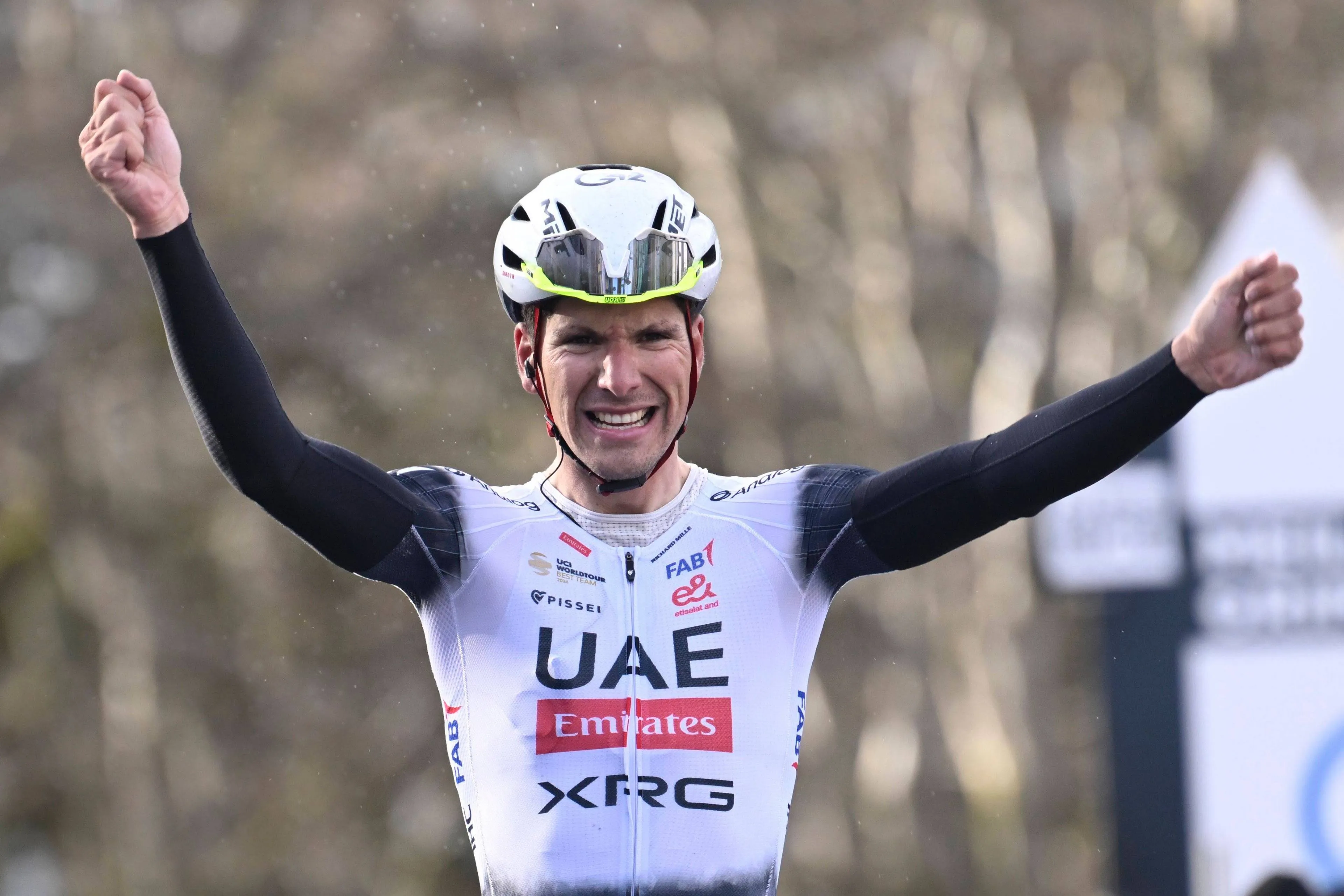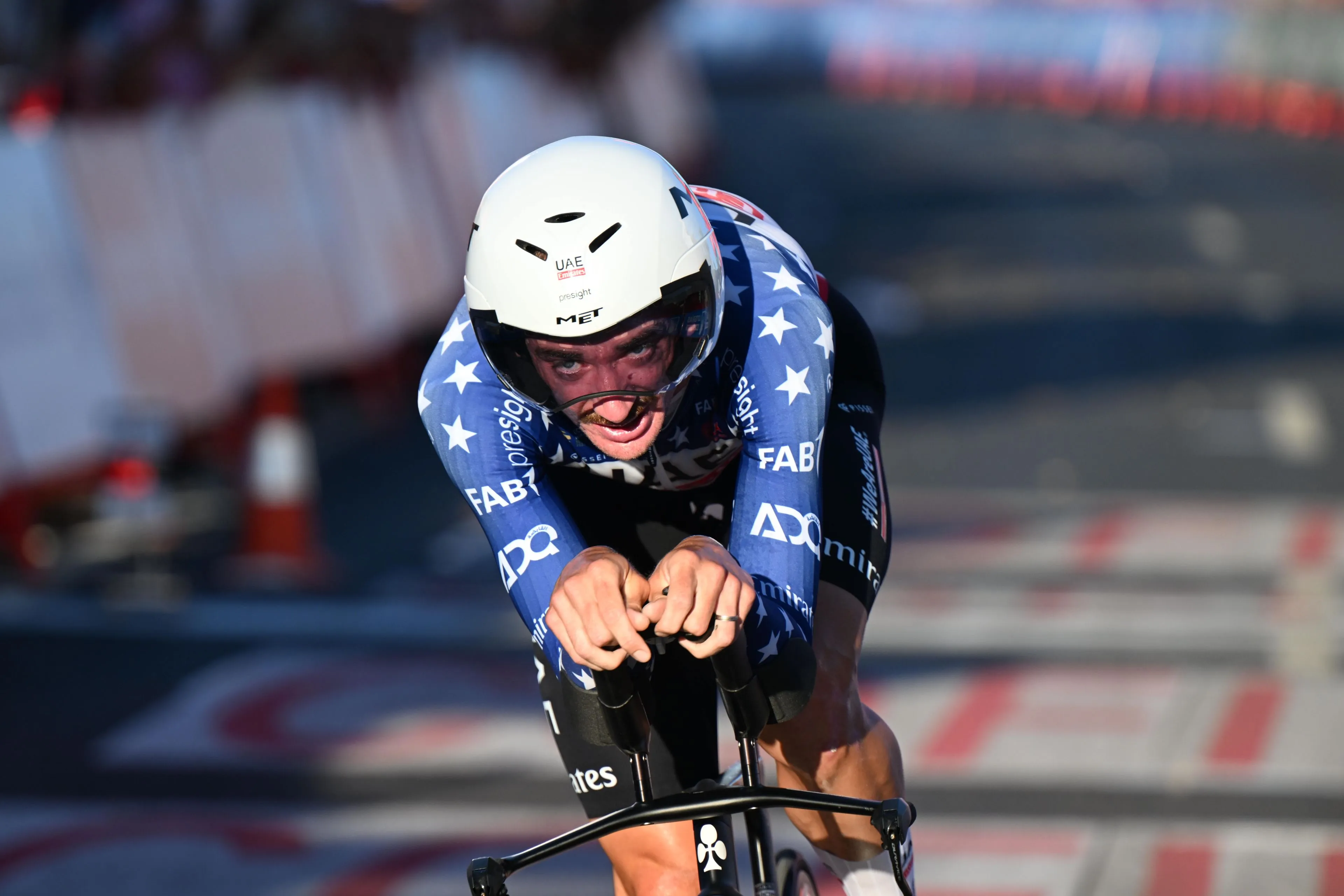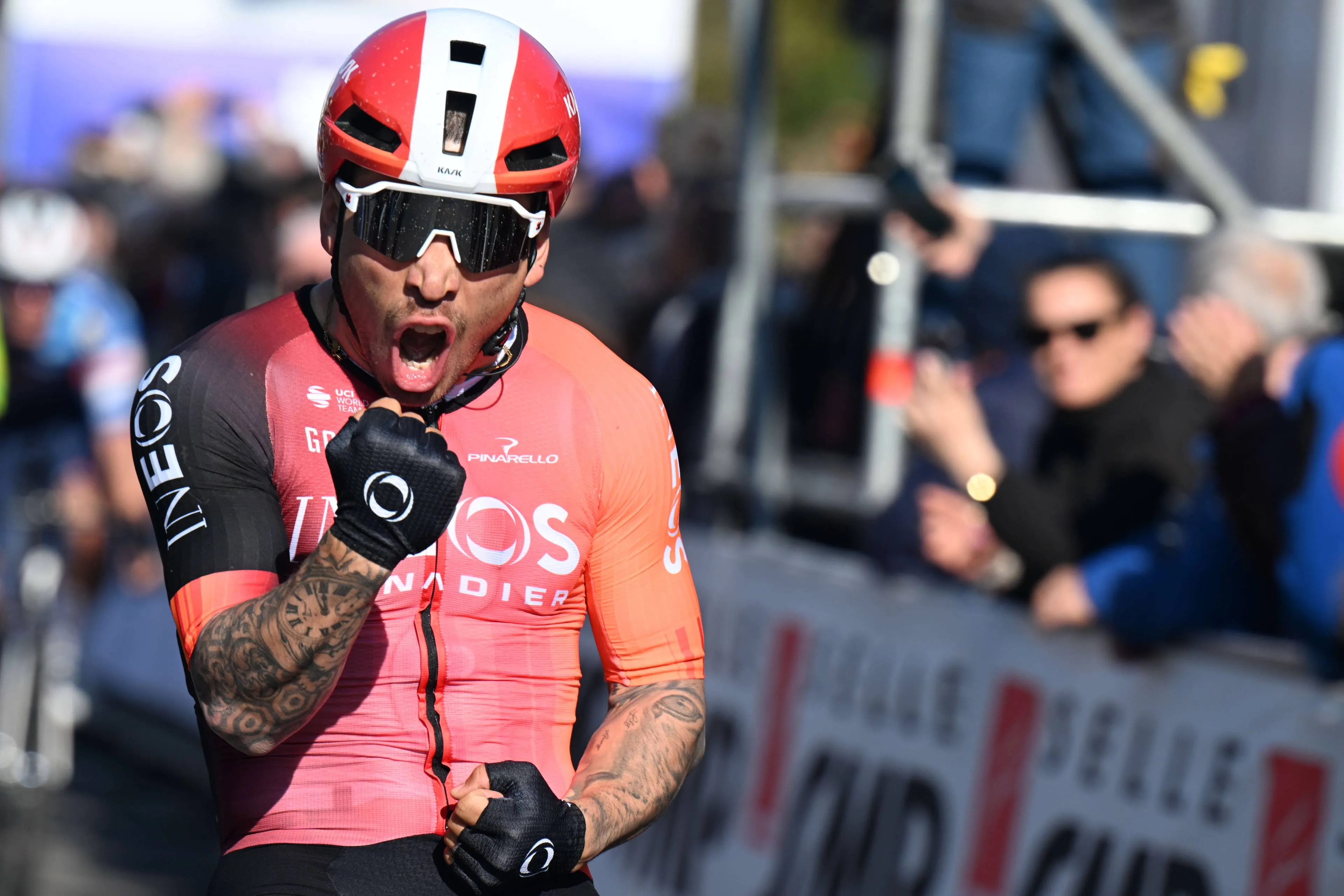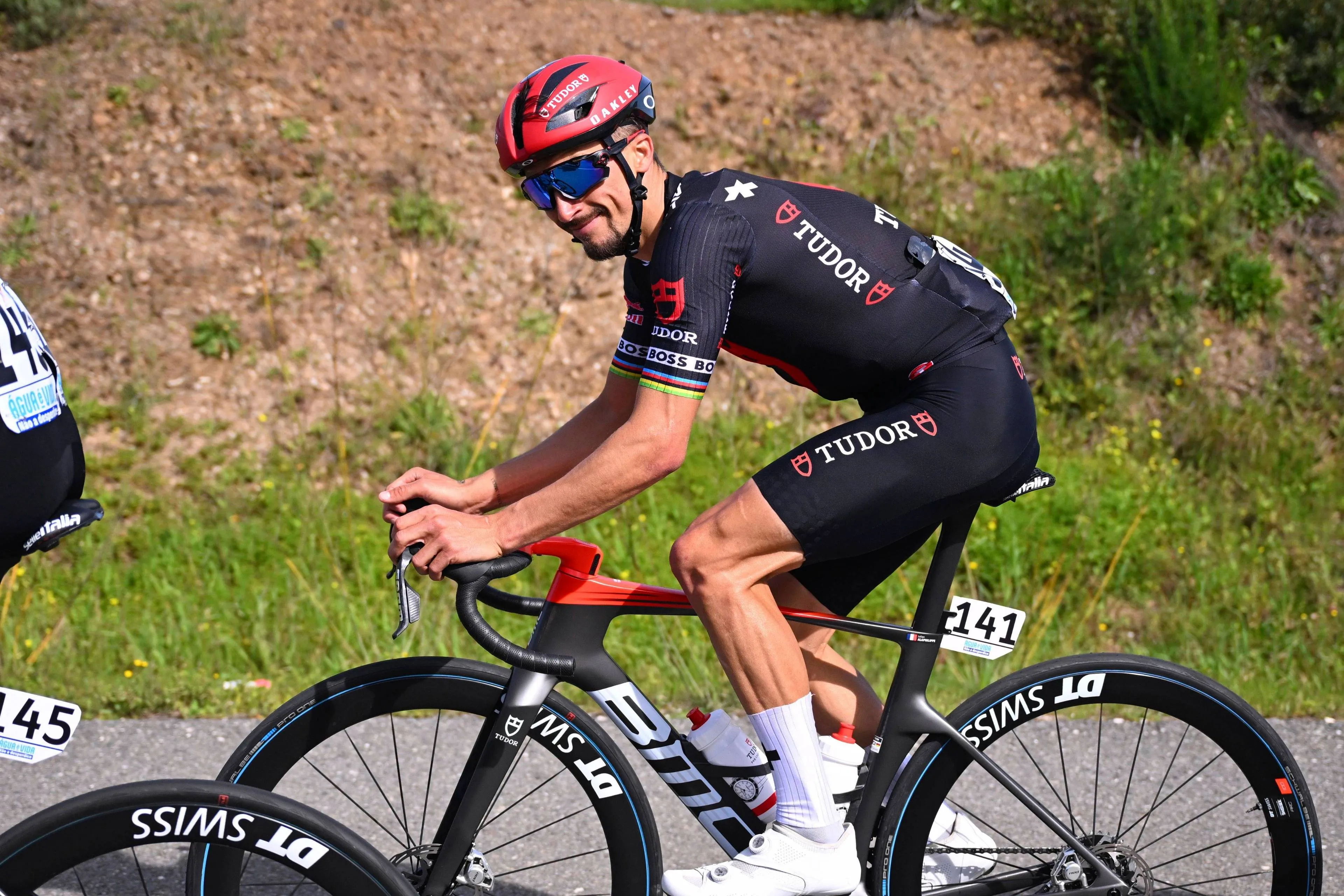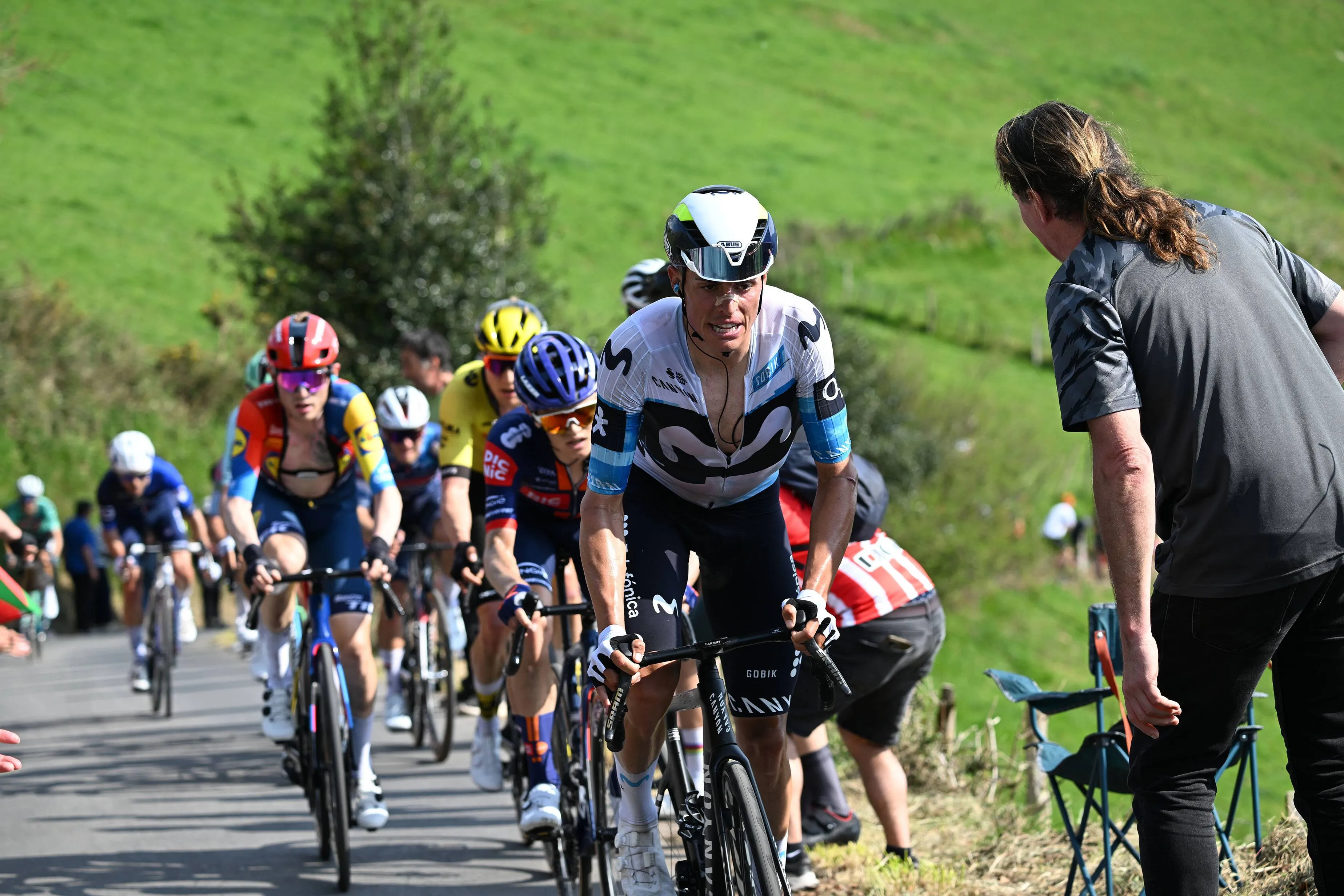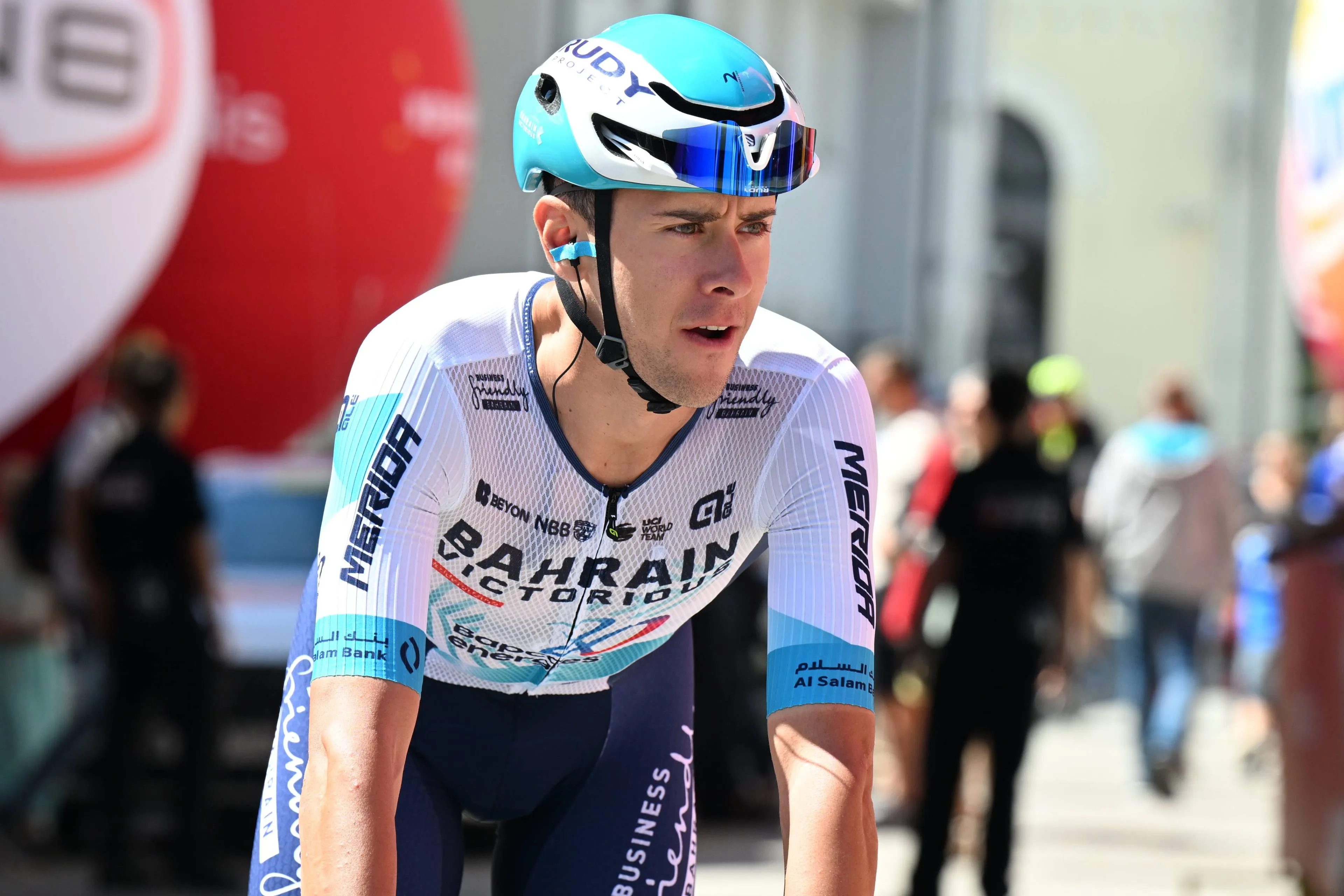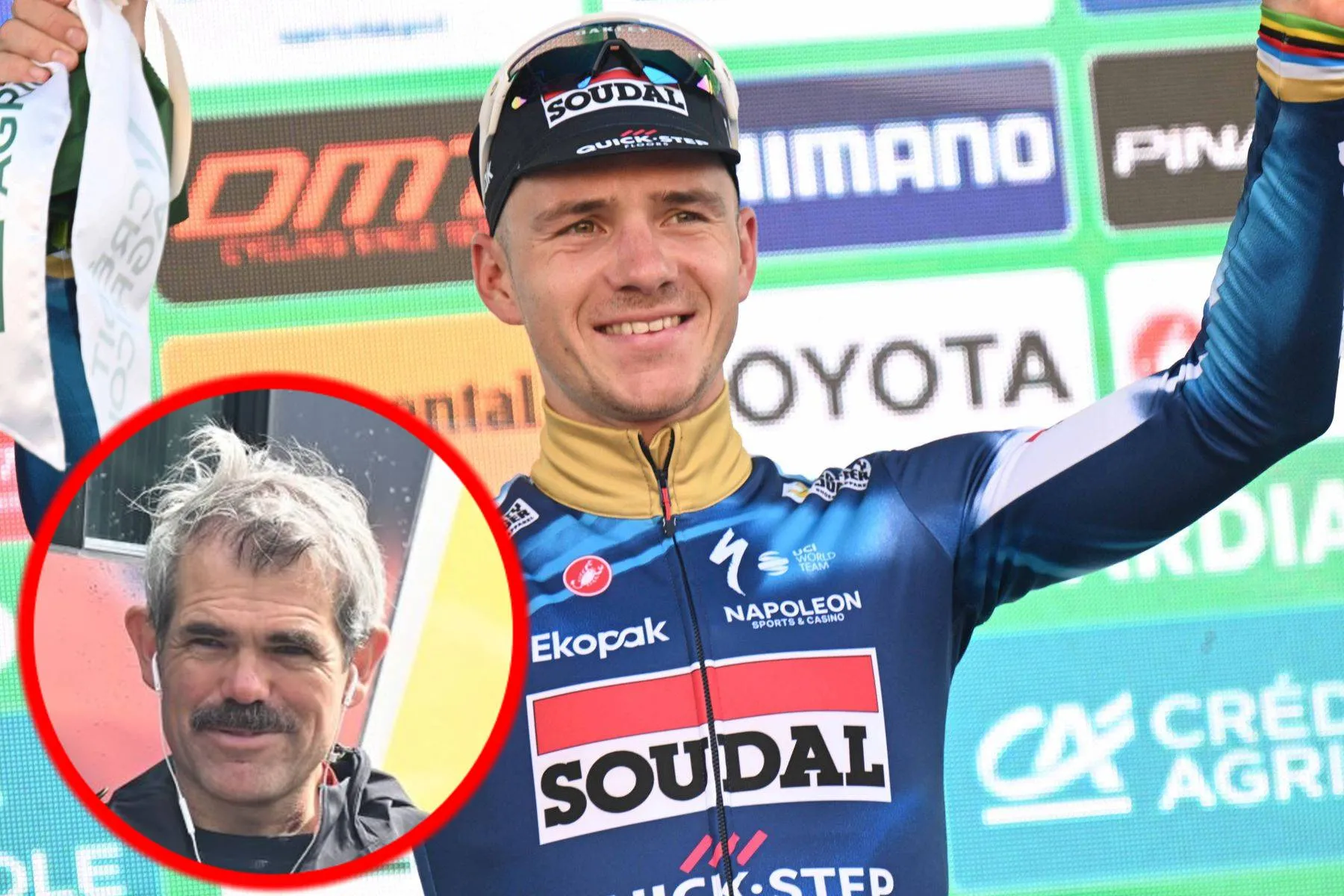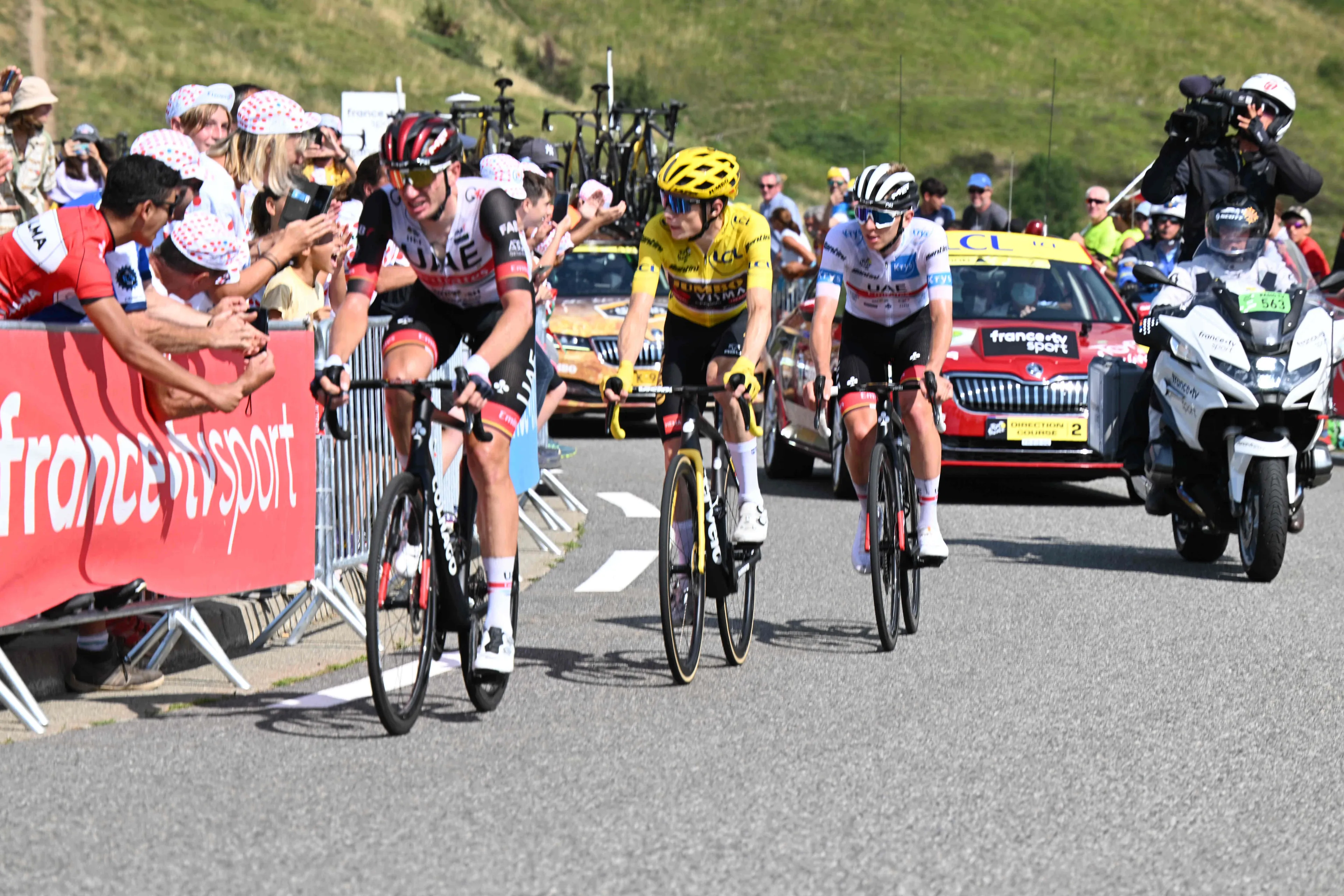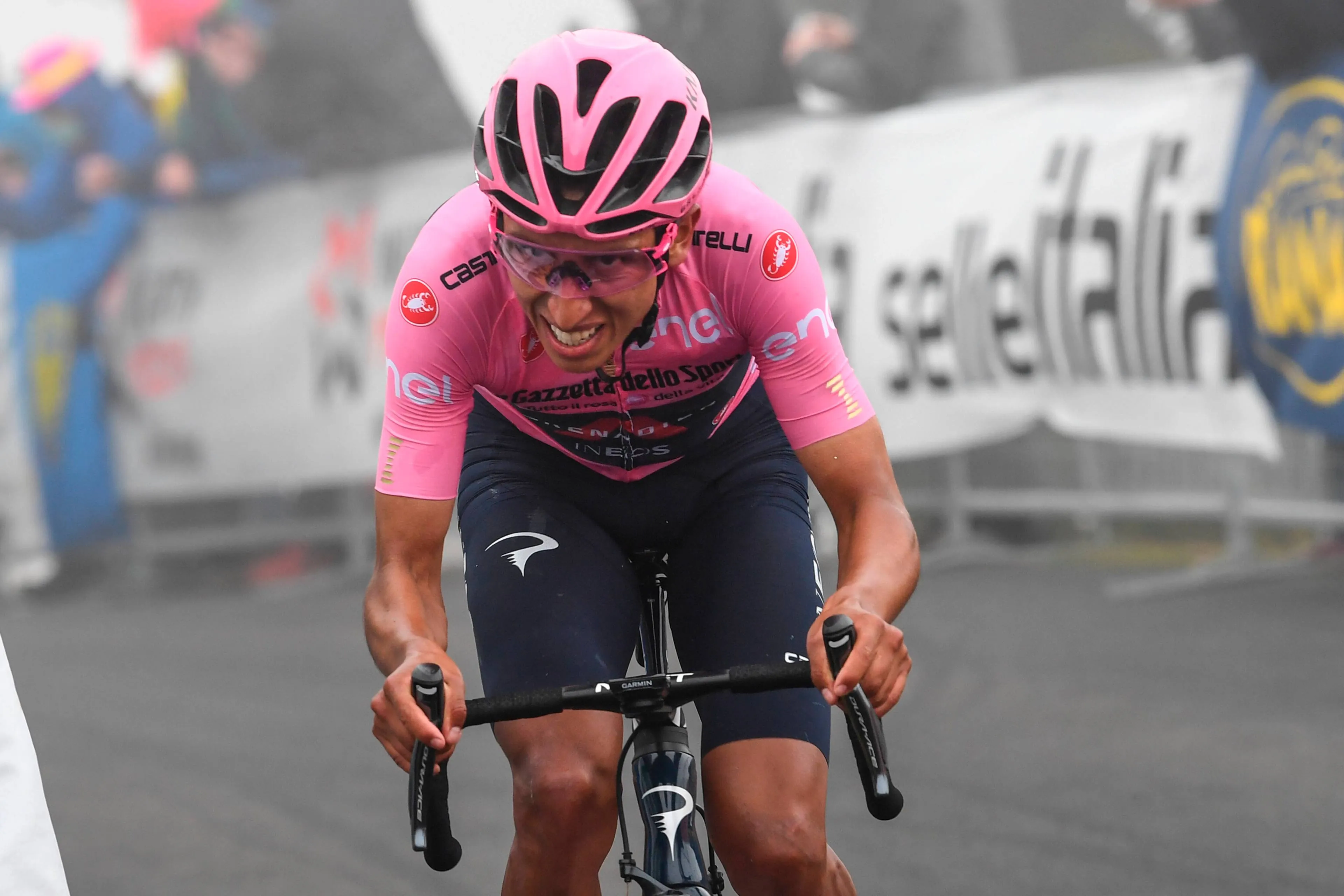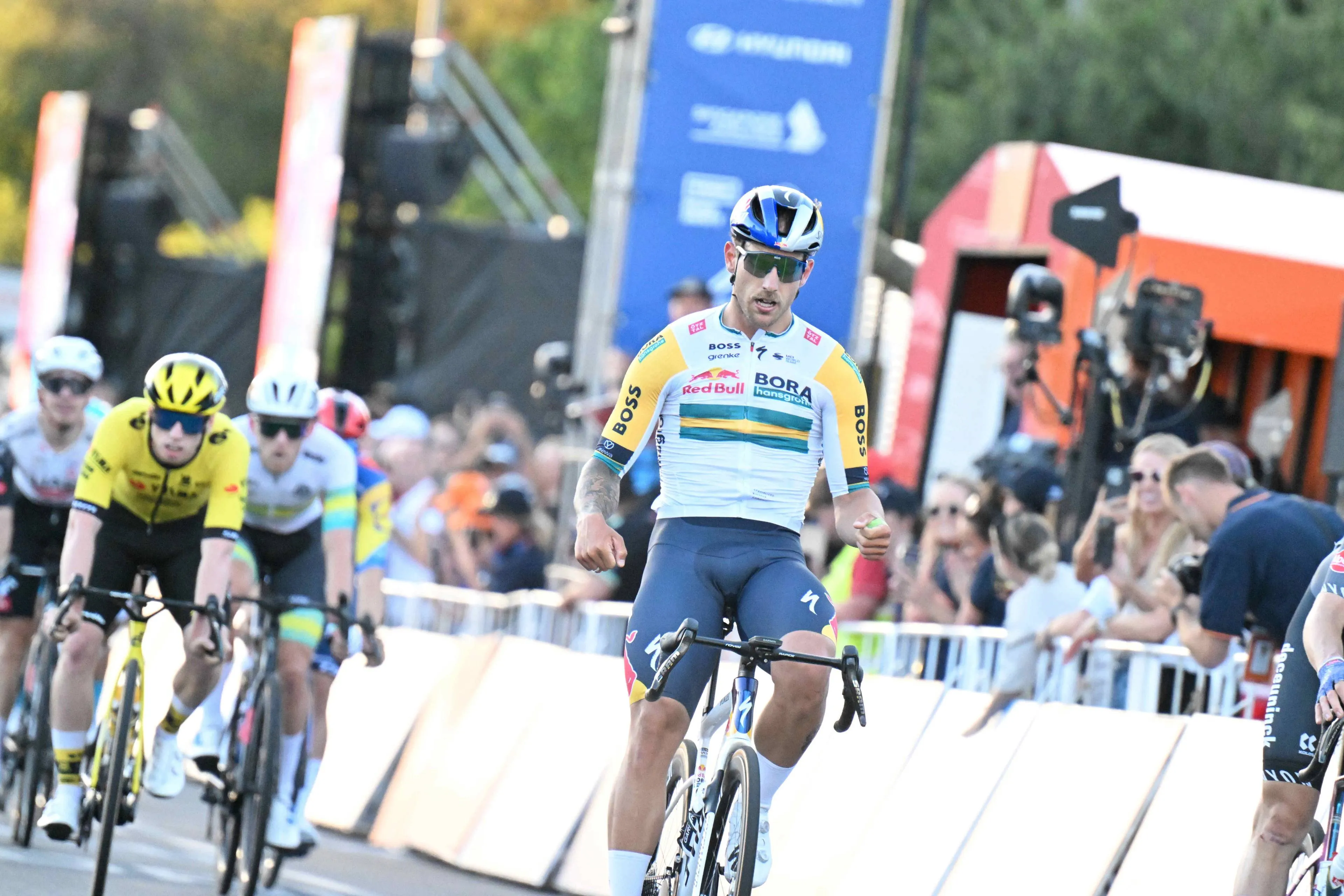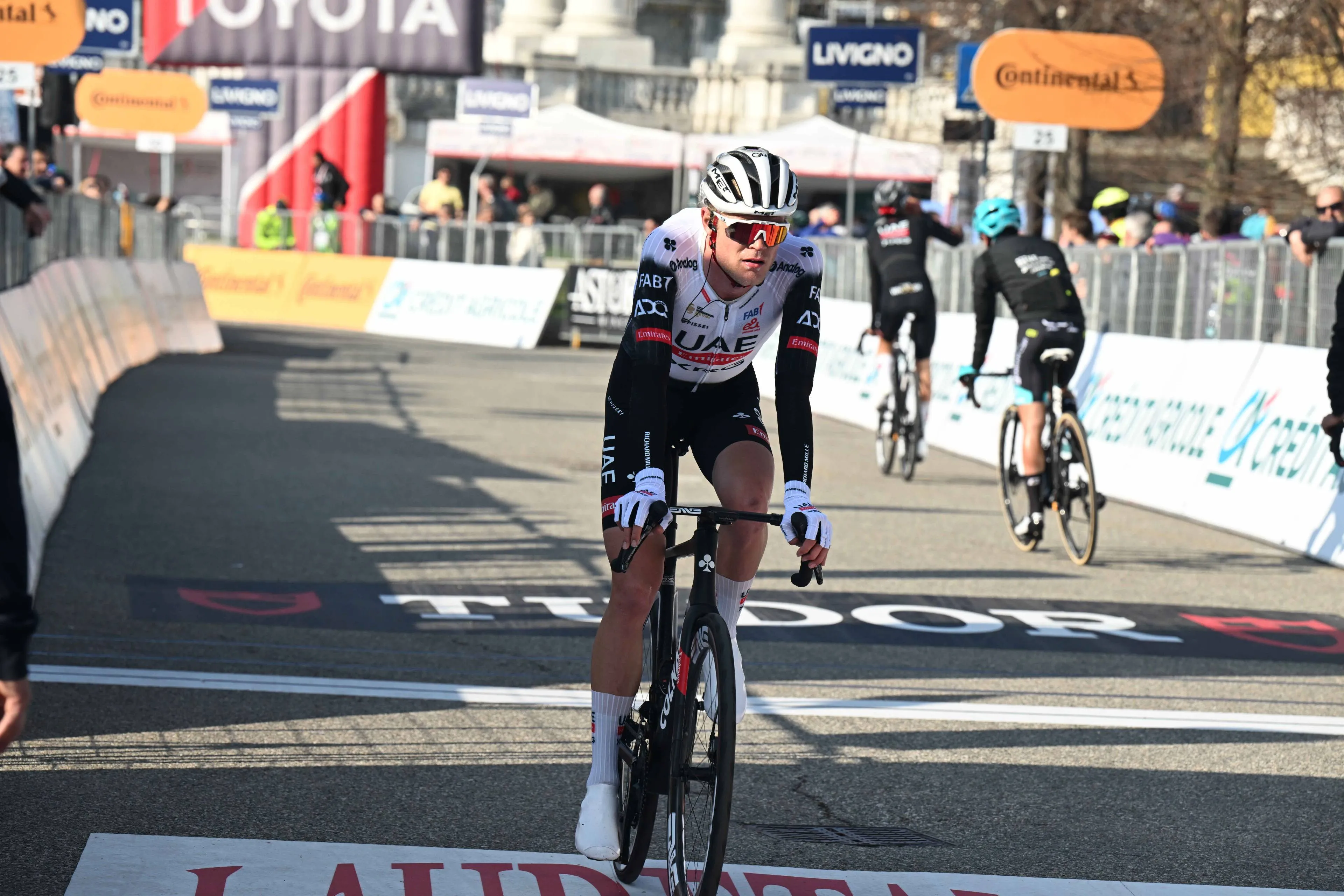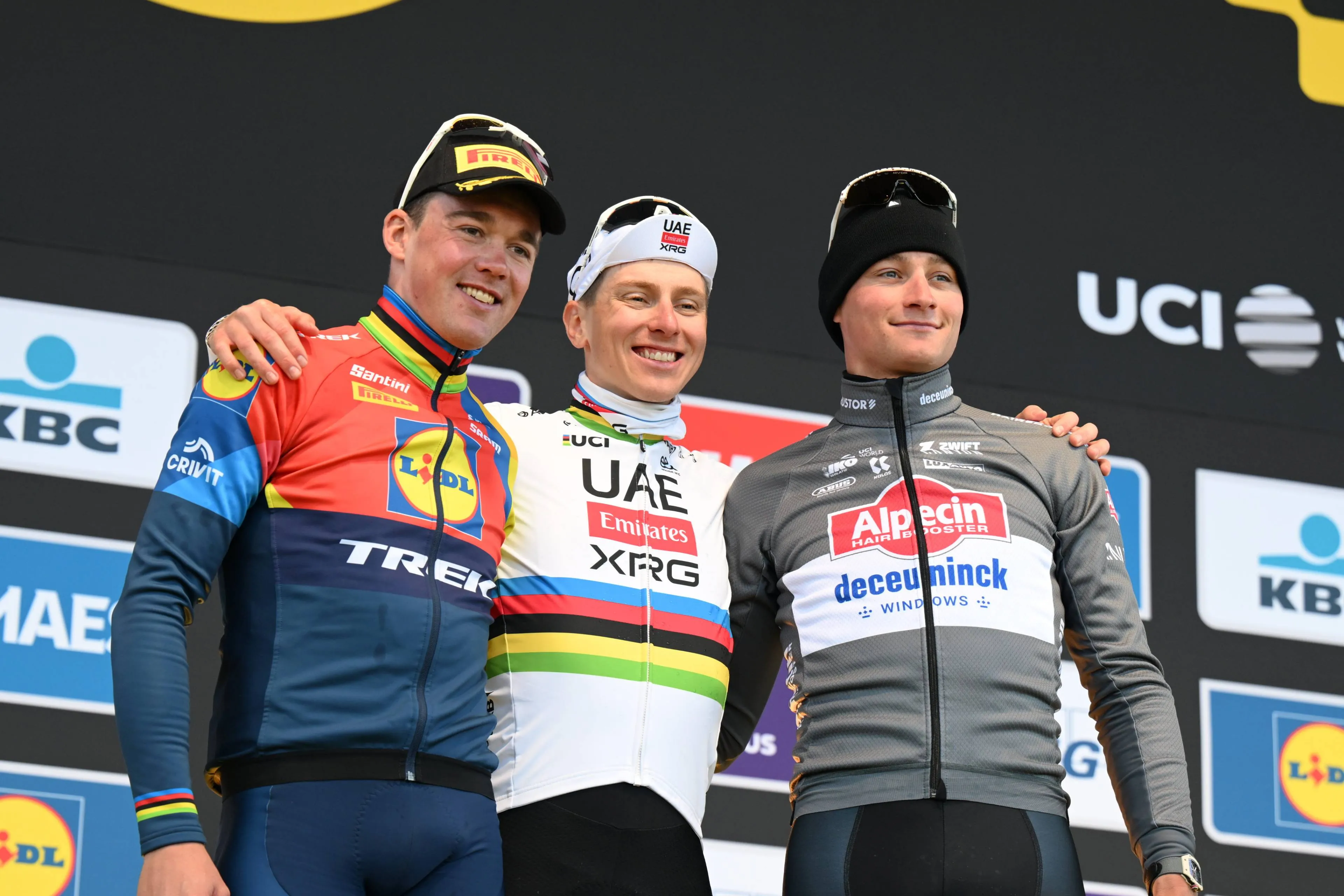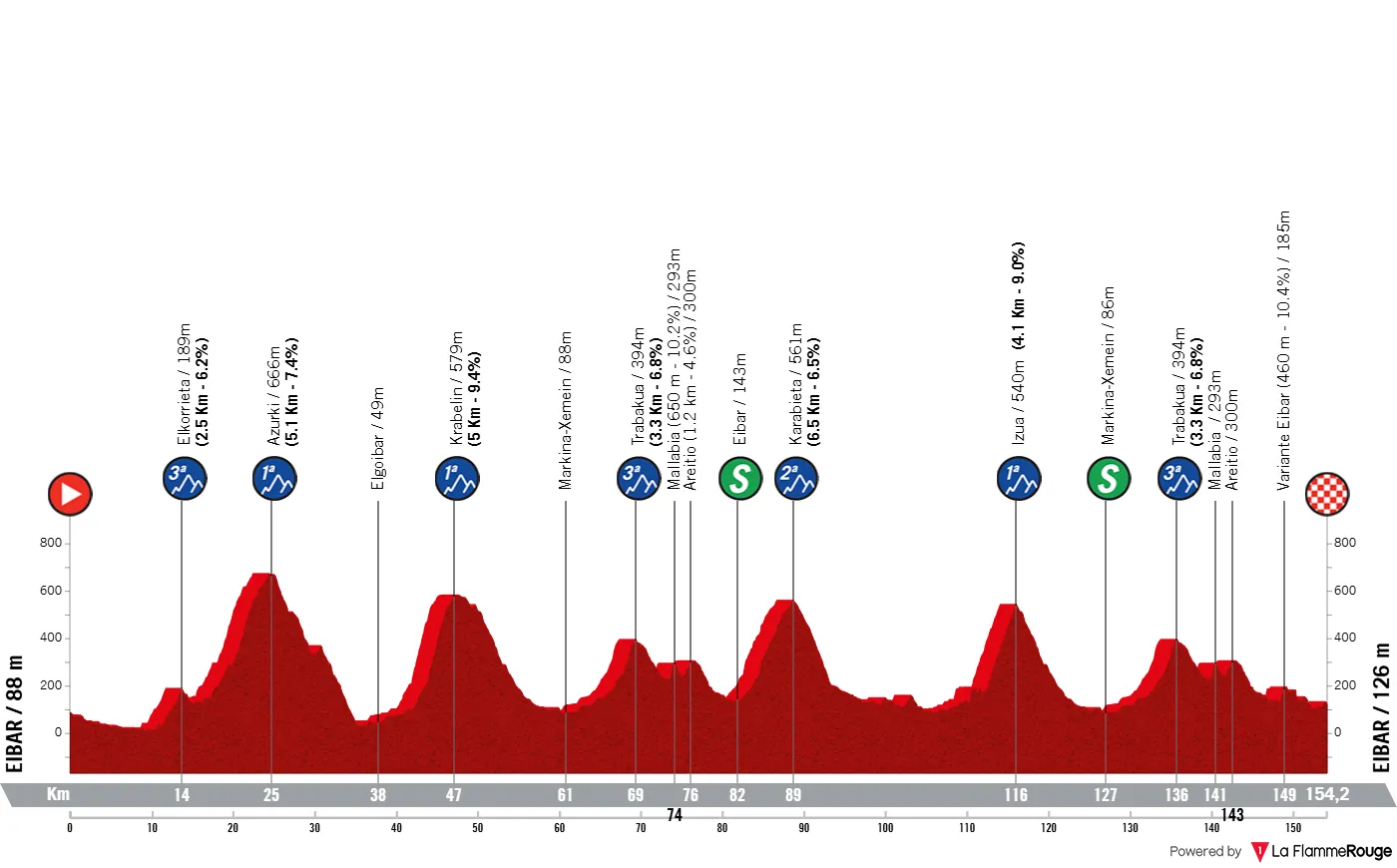
From the 7th to the 12th of April, the peloton will take on Itzulia Basque Country; a race that is well known for it's course designed for climbers and puncheurs in a region full of cycling history. We take a look at it's profiles.
The race consists of six stages, opening up with a hilly time-trial, followed by a somewhat flat stage and then four consecutive days of riding in the hills and mountains - where the overall classification can be decided on every single one.
Read also

Stage 1 (ITT): Vitoria-Gasteiz - Vitoria-Gasteiz, 16.5 kilometers
The race starts off with a 16-kilometer time-trial in Vitoria-Gasteiz, one that is not flat and as usual will already create some early differences between the overall classification contenders.
There is no technical aspect to this time-trial, it's very simple and in the first half, although they are not too difficult, there are a couple of small ascents. Still, it is mostly rolling terrain where the specialists can still make the difference.
Read also
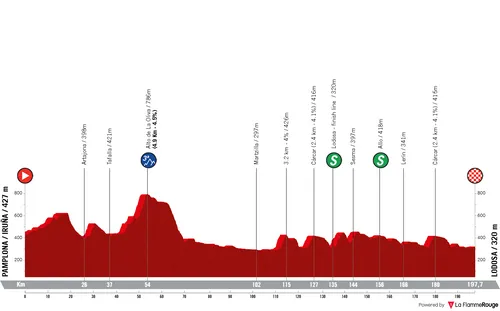
Stage 2: Pamplona - Lodosa, 197.9 kilometers
Stage 2 is the one day where the sprinters can happily say that they will have a clear opportunity to win. Don't be mistaken, it's not a traditional flat day, but the climbs won't be too dramatic and a bunch sprint seems relatively inevitable going into Lodosa after 197 kilometers.
There will be 1600 meters of climbing over the day, not too much, and the final climb summits with 17 kilometers to go, being around 2 kilometers at 4%. No-one who wants to fight for the stage win will get dropped in such gradients, and a bunch sprint is then likely.
It won't be a simple one, with a roundabout coming with 2.3 kilometers to go which leads to a downhill section where the speeds will be very high. With 1.2 to go they reach the riverside and from here on out it's a flat finale, with a slight right-hander with around 300 meters to go.
Read also

Stage 3: Zarautz - Beasain, 157 kilometers
The third day of the race will be the introduction to what Itzulia offers the most. The stage between Zarautz and Beasain will feature plenty ascents and the ones that come later in the day are extremely steep. Not necessarily a day just for the climbers, plenty riders can have a chance in such an explosive finale.
3100 meters of climbming on the menu, however most of the climbs in the first two thirds of the race will be there to set fatigue and won't see attacks. Even the penultimate of the day, the toughest - to Gainza - is unlikely to see attacks because of the long flat stretch that follows. Nevertheless, the ascent is 2.3 kilometers long at 11% and it gets substantially steeper at the summit, so a lot of riders will go to the limit here (the climb ends with 37 kilometers to go).
The attacks should come later in the day instead, on the ascent to Lazkaomendi which is 1.4 kilometers long at 9.4%. Not as difficult but the summit comes with only 6 kilometers to the finish, and going solo over the top means an almost certain win as the descent will quickly lead the riders into town. The final 3 kilometers are still mostly flat, and so there is room for more attacks before the finish for those looking to avoid a sprint.
Read also
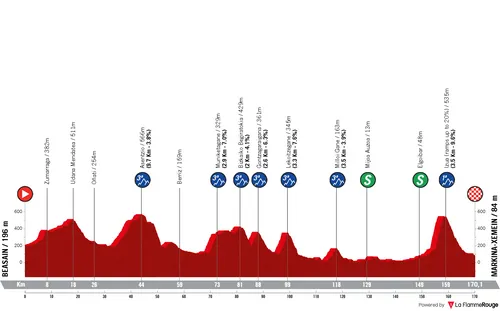
Stage 4: Beasain - Markina-Xemein, 170.1 kilometers
Stage 4 is a harder challenge with no doubt, a day, one where the climbers can make a lot of difference, even if the attacks only come on the final ascent. There will be punchy ascents early on in the day which adds to the fatigue and increase the day's total amount of climbing to 2800 meters, but the focus will truly be on that final climb.
Before the downhill finish into Markina-Xemein is 3.5 kilometers long at almost 10% and this is a climb that without a doubt the climbers can use to make the difference. In Izua, the ramps will go up to 20% and this finishes only with 11 kilometers to go on the day.
Like the previous day, this is one where if you go over the top of the final climb alone a victory is quite likely, as most of the way to the finish is downhill and will be very fast - whilst a group will never have an easy time organizing a proper chase.
Read also
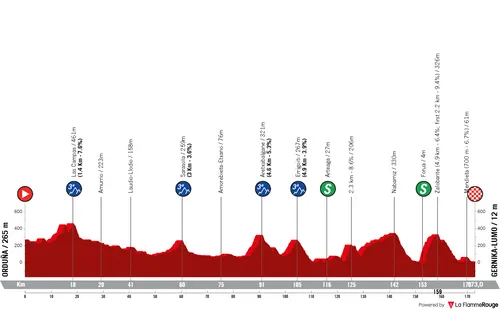
Stage 5: Orduña - Gernika-Lumo, 172.9 kilometers
Stage 5 is a tricky day to predict, a hilly day but the climbs aren't truly brutal. The overall classification can absolutely implode if someone fully devotes to attacking the race, however if this isn't the case we may have a tactical finale or even reduced bunch sprint - if not a breakaway - to decide the outcome of the day.
The ascent to Zalobante will be under the spotlight, being 4.9 kilometers long at 6.4% and ending with 14 kilometers to go. The first half of this climb averages almost 10% and can be used to make the difference. Regardless, the peloton will lose men, and it's possible that over the less steep second half there will be attacks and attempts to go for a solo win, not based on strength but instead on tactics.
However this can be played in many different ways, as with 3 kilometers to go there is a 700-meter ramp that averages 6% where more attacks can happen. A finale that is open to many kinds of riders and can be quite interesting, even bringing forward some surprises.
Read also

Stage 6: Eibar - Eibar, 154.1 kilometers
The queen stage in the Basque Country is always a day to fear unless you're an extremely talented climber. 3600 meters of climbing in 154 kilometers starting and finishing in the town of Eibar, with some very difficult climbs spread all throughout the day. It's one purely for the climbers, where the key attacks can come on several moments of the day.
Truly a gruesome day of racing. The climbs, mostly, are known to those who participate in this race but it won't make them any easier:
Ekorrieta: 2.5Km; 6.2%; 140Km to go
Azurki: 5.1Km; 7.4%; 129Km to go
Krabelin: 5Km; 9.4%; 107Km to go
Trabakua: 3.3Km; 6.8%; 85Km to go
Karabieta: 6.5Km; 6.5%; 65Km to go
Krabelin is the hardest climb of the day, and it's quite possible that some riders will try to raid the race in there, but the climb where it's most likely that there will be big attacks is Izua which comes with a manageable 38 kilometers to go. It's just over 4 kilometers long but the final 3 average 10%, it's steep and long enough for the pure climbers to really make a difference. However the climbing doesn't end there.
The ascent to Trabakua is ridden once again, now finishing with 18 kilometers to go, followed by two small ascents... The climbing truly never ends on a day like this, as even after the final categorized ascent there are still three serious ones to tackle.
The last of which is the 'variante' ascent, on a wide highway area, only 500 meters long but it averages 10% and comes with 5 kilometers to go at the end of a brutal day. The finale itself won't be downhill but rather rolling, with small downhill or uphill gradients all the way into the finish line in Eibar.
Read also
🔝2025EKO ITZULIA BASQUE COUNTRYREN KARTEL OFIZIALA 🔝
— Itzulia Basque Country (@ehitzulia) March 25, 2025
Gaur aurkeztu dugu 2025eko Itzulia Basque Countryren kartel ofiziala.
Itzuliaren 64. edizioko kartelaren egilea David de las Heras da, @david_delasheras
🔥 CARTEL OFICIAL DE LA ITZULIA BASQUE COUNTRY 2025 🔥
Hoy hemos… pic.twitter.com/gBcoLRkjzo
claps 1visitors 1
Just in
Popular news
Latest comments
- Ah pundits….those who cannot do, fill air time and column inches criticizing those who can… Eddy Merckx wins all the races…cycling is boring and sucks nowCrashjames17-12-2025
- Boring to see a generational talent in your own life time? We should all feel privileged to see it. I certainly do. I feel the same when I see other once in a life time amazing guys in other fields rewriting the record books: Magnus Carlsen in chess and Shoei Ohtani in baseball. And the way they carry themselves.. humble and respected by their peers adds to their appeal.Santiago17-12-2025
- As a current or ex crosser, you should be asking yourself 'what is VDP doing that I'm not', instead of bellyaching that he's winning everything. It's not boring for me to watch an athlete, at the pinnacle of their career, absolutely pulverised the opposition. Whether it be Tiger Woods, Usain Bolt, Roger Federer or indeed our own Tadej Pogacar. Are cyclists really such a bitter breed that we see excellence as boring? Personally, I'm in absolute awe. Here's a question for Mr Wellens, how long will it take before Thibaut Nys becomes boring, after VDP has hung up his wheels?Pogthegoat17-12-2025
- Monotonous? Boring? Pundit? WTF?MajorPayne17-12-2025
- What a backwards step for this team. First the signing of Ayuso and now every chance of Derek Gee.whit2pet17-12-2025
- and also let’s hope he doesn’t have a wife that goes off on the team and riders.mij17-12-2025
- with all due respect to Welsford, what has he won to deserve the title “ace”. he is there in many sprints, but other than some nationals and maybe a 3rd tier race, he isn’t exactly a feared sprinter in the peloton. of course with the right team he could become a winner, but is Ineos the right team? Unlike a Quick-Step, Ineos is not exactly sprinter friendly. they don’t have a track record of developing winners at sprinting.mij17-12-2025
- Let's hope that he doesn't throw his tantrums on his teammates at Visma.
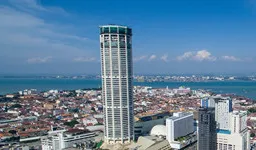 KerisVroom17-12-2025
KerisVroom17-12-2025 - Hopefully it's for more money than his previous year. That said, he also knows that 2 even younger riders with a potentially higher ceiling could replace him. So he's still fortunate to be part of a team that wins.Veganpotter16-12-2025
- No mention to their best cyclist? Paul Magnier. Save my words.
 PAULO16-12-2025
PAULO16-12-2025
Loading
Write a comment
